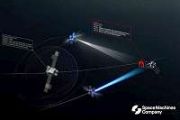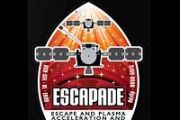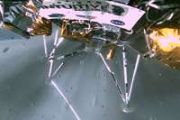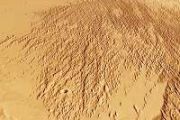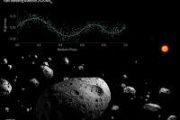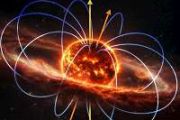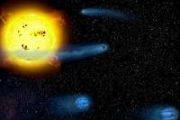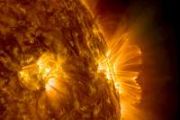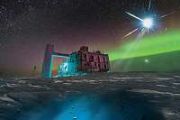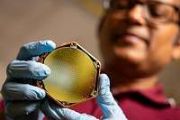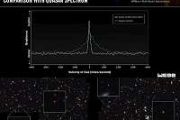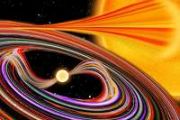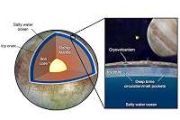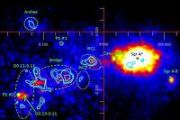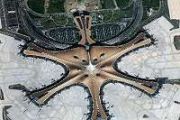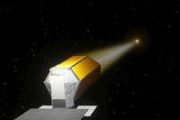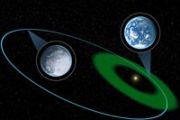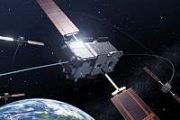
Copernical Team
Fireworks from space
 Image:
Fireworks from space
Image:
Fireworks from space Space Themed Casino Games Slots, Rockets, and Astronaut Adventures
 Casino gaming is one gaming niche that has seen tremendous growth in recent years. When we talk about casino gambling, space-themed games are the ones that are grabbing the attention of the masses. People are just getting crazy about playing space-themed casino games. We are going to discuss the top space-themed casino games in this post. Keep reading.
Casino gaming is one gaming niche that has seen tremendous growth in recent years. When we talk about casino gambling, space-themed games are the ones that are grabbing the attention of the masses. People are just getting crazy about playing space-themed casino games. We are going to discuss the top space-themed casino games in this post. Keep reading. Time-expanded network model cuts complexity in mega constellation launch planning
 Large Low Earth Orbit (LEO) constellations promise continuous, high-capacity information services, but planners must work within limits set by launch cadence, payload capacity, and orbital mechanics to deploy satellites in batches at reasonable cost. Researchers Junru Lin, Tiantian Zhang, and Min Hu at Space Engineering University in Beijing have developed an optimization framework that keeps de
Large Low Earth Orbit (LEO) constellations promise continuous, high-capacity information services, but planners must work within limits set by launch cadence, payload capacity, and orbital mechanics to deploy satellites in batches at reasonable cost. Researchers Junru Lin, Tiantian Zhang, and Min Hu at Space Engineering University in Beijing have developed an optimization framework that keeps de SSC ground stations to support NASA PExT wideband Ka band test
 Swedish Space Corporation (SSC) will provide direct-to-Earth forward and return Ka-band links through its global ground station network to support NASA's Polylingual Experimental Terminal (PExT) technology demonstration.
PExT, managed by NASA's Space Communications and Navigation (SCaN) Program in collaboration with the Johns Hopkins Applied Physics Laboratory, is an in-flight Ka-band wide
Swedish Space Corporation (SSC) will provide direct-to-Earth forward and return Ka-band links through its global ground station network to support NASA's Polylingual Experimental Terminal (PExT) technology demonstration.
PExT, managed by NASA's Space Communications and Navigation (SCaN) Program in collaboration with the Johns Hopkins Applied Physics Laboratory, is an in-flight Ka-band wide Space-traveled mouse gives birth as China names pioneering "flying mice" crew
 Of the four mice that recently flew aboard China's space station, one female has now given birth to healthy offspring on Earth, in a mission that also saw the public help name the pioneering "flying mice" crew. The Technology and Engineering Center for Space Utilization (CSU) under the Chinese Academy of Sciences (CAS) said the experiment marks China's first full-cycle mammalian space study, fro
Of the four mice that recently flew aboard China's space station, one female has now given birth to healthy offspring on Earth, in a mission that also saw the public help name the pioneering "flying mice" crew. The Technology and Engineering Center for Space Utilization (CSU) under the Chinese Academy of Sciences (CAS) said the experiment marks China's first full-cycle mammalian space study, fro China harnesses nationwide system to drive spaceflight and satellite navigation advances
 China's manned space program has used a nationwide resource mobilization system to manage a recent contingency involving the Shenzhou-20 mission and to launch its follow-on Shenzhou-22 spacecraft within 20 days.
After the Shenzhou-20 return vehicle suffered minor window damage from space debris, the China Manned Space Agency activated its first contingency plan of this kind, coordinating e
China's manned space program has used a nationwide resource mobilization system to manage a recent contingency involving the Shenzhou-20 mission and to launch its follow-on Shenzhou-22 spacecraft within 20 days.
After the Shenzhou-20 return vehicle suffered minor window damage from space debris, the China Manned Space Agency activated its first contingency plan of this kind, coordinating e Fly through Webbs cosmic vistas celebrates four years of James Webb discoveries
 On the fourth launch anniversary of the NASA ESA CSA James Webb Space Telescope, the European Space Agency has released a 43 minute fly through video built from many of Webbs best known images, presented as a single continuous journey across the cosmos. The compilation revisits a wide range of Webb observations, arranging them as a sequence of progressive zooms that simulate a flight through dif
On the fourth launch anniversary of the NASA ESA CSA James Webb Space Telescope, the European Space Agency has released a 43 minute fly through video built from many of Webbs best known images, presented as a single continuous journey across the cosmos. The compilation revisits a wide range of Webb observations, arranging them as a sequence of progressive zooms that simulate a flight through dif Rethinking how we end a satellite's mission
Verifying that you are not a bot
Turning structural failure into propulsion
Verifying that you are not a bot
Before we build on the moon, we have to master the commute
Verifying that you are not a bot


